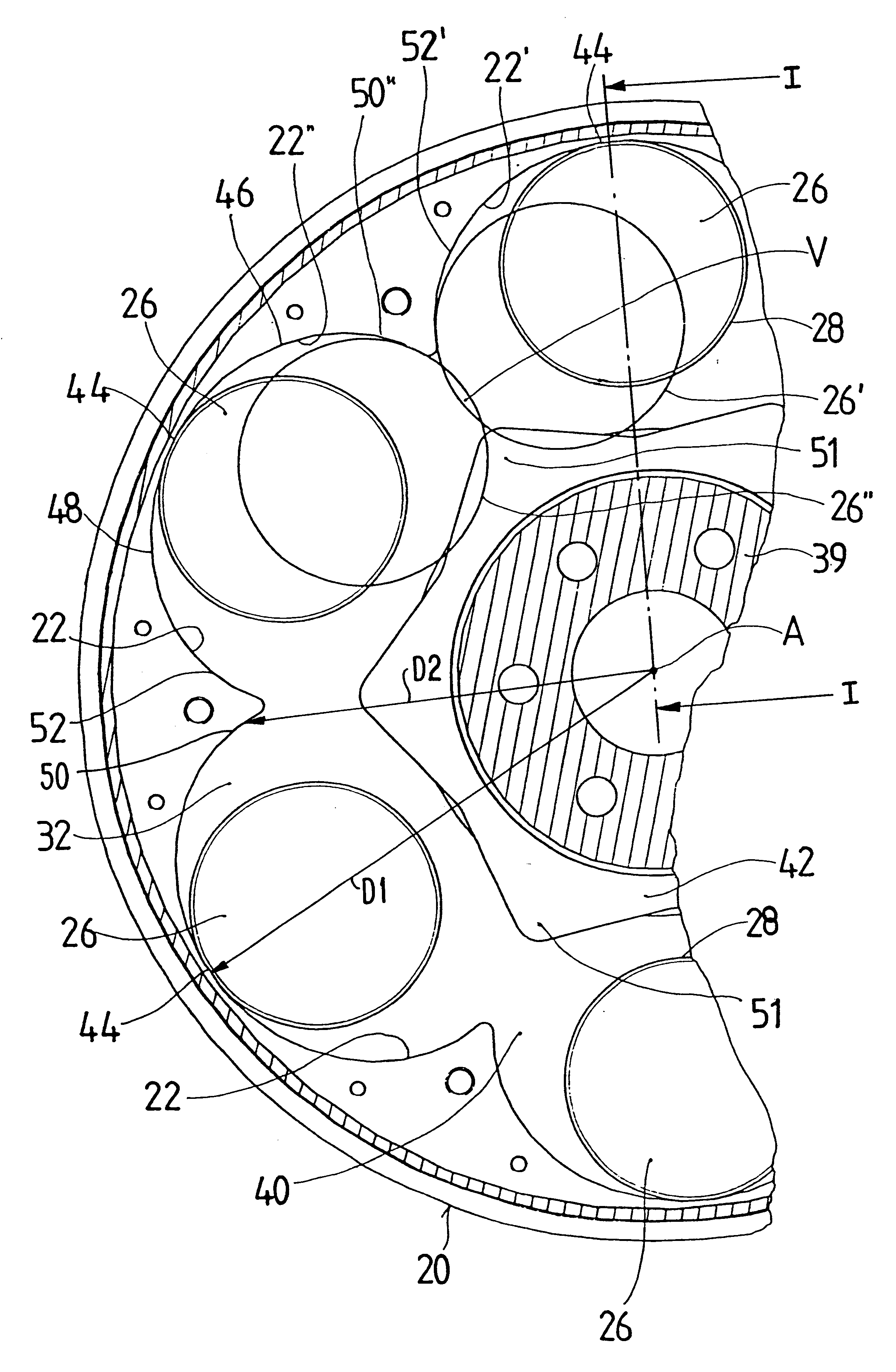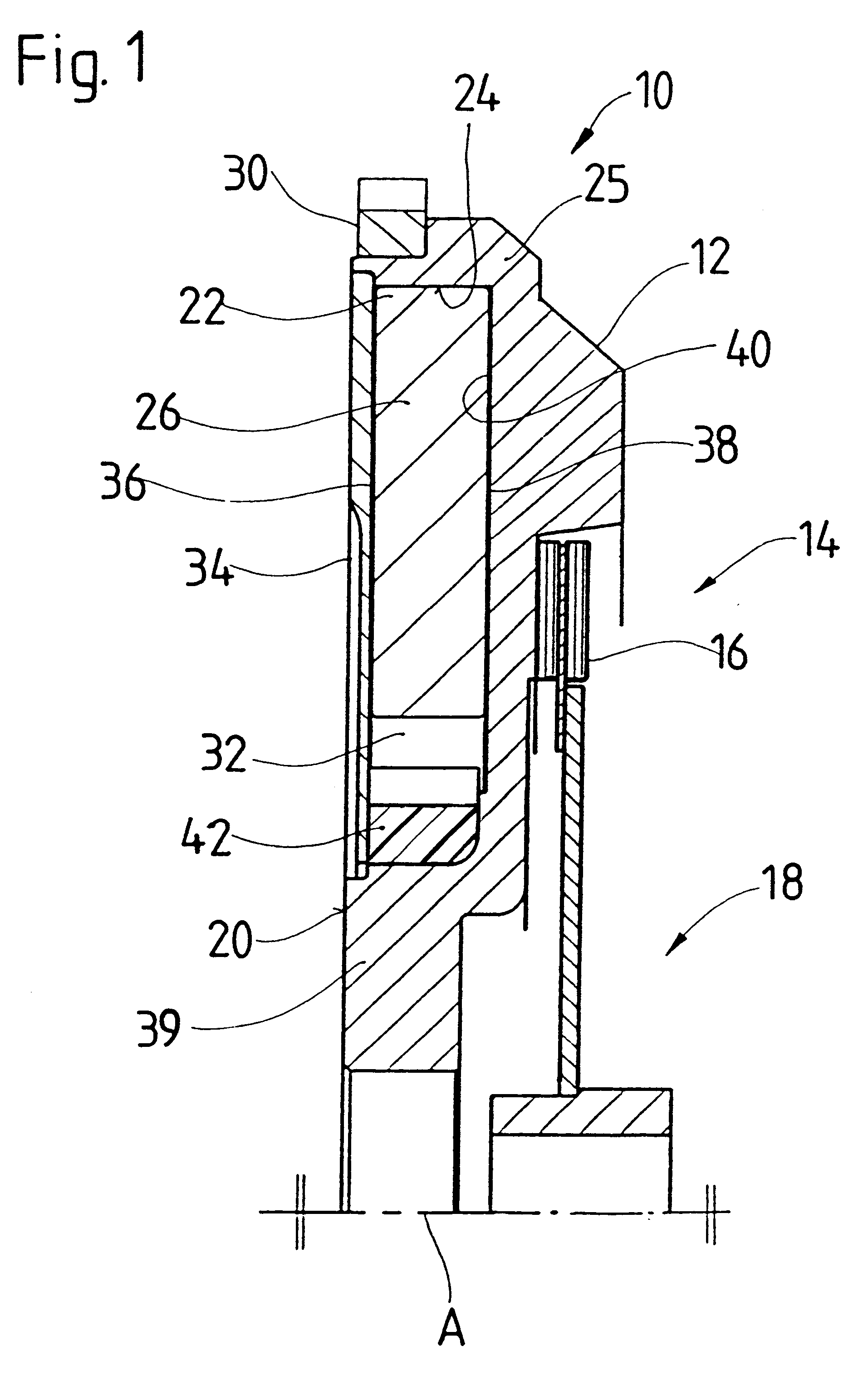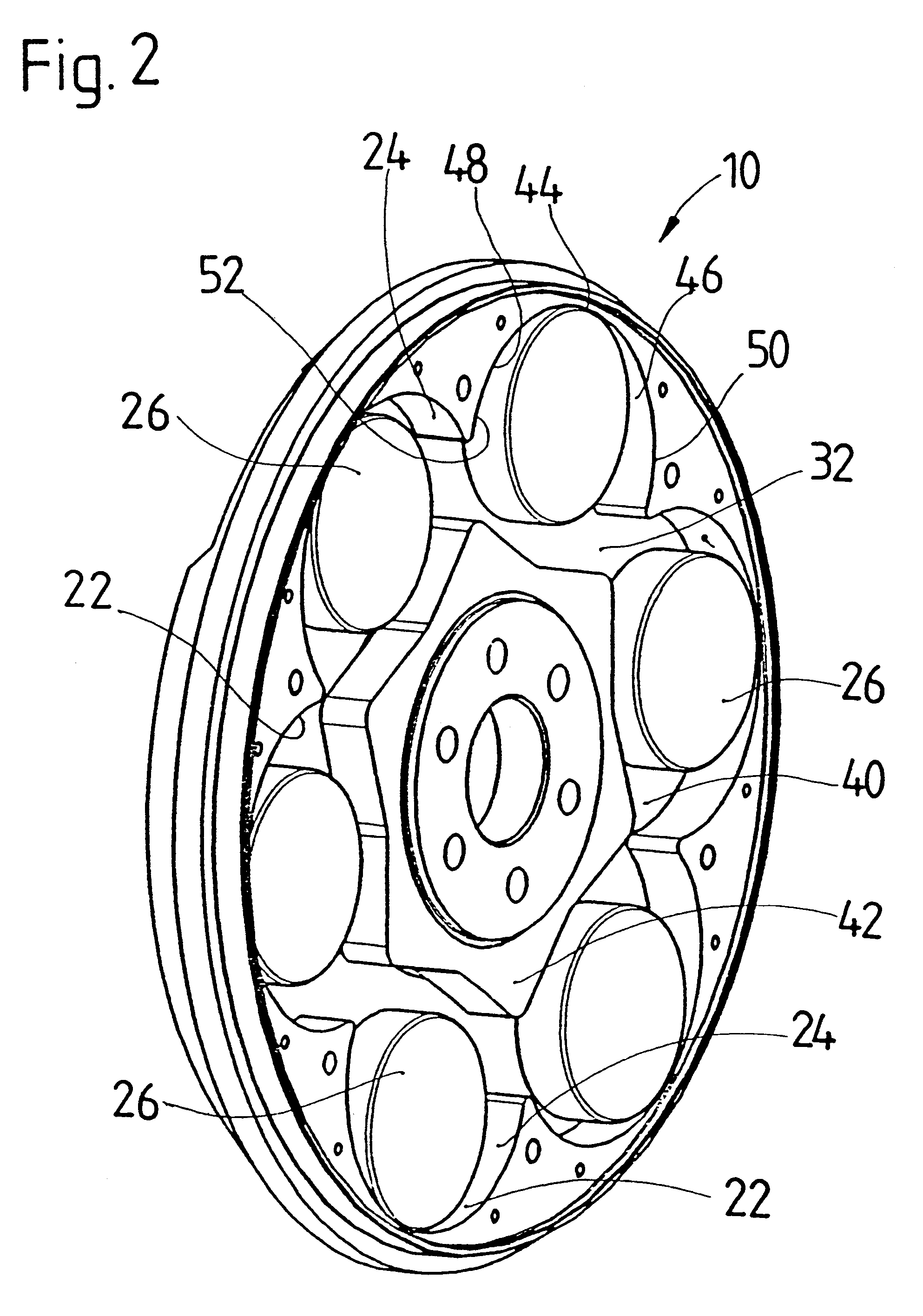Vibration damping device
a damping device and vibration technology, applied in the direction of fluid couplings, mechanical control devices, instruments, etc., can solve the problems of affecting driving comfort and behavior, affecting the end area of the deflection path, and affecting the damping effect of torsional vibration
- Summary
- Abstract
- Description
- Claims
- Application Information
AI Technical Summary
Benefits of technology
Problems solved by technology
Method used
Image
Examples
Embodiment Construction
A vibration damper 10 according to an embodiment of the present invention is shown in FIGS. 1 to 3. The vibration damper 10 is provided for use with a flywheel 12 of a motor vehicle clutch 14 which is indicated only schematically. This flywheel 12 is engagable with friction facings 16 of a clutch disk 18 so that a driving force is conducted via a drivetrain from a driving unit coupled with the flywheel 12 to driving wheels when the clutch 14 is engaged. It is noted that the vibration damper 10 as shown here in connection with the flywheel 12 at a drivetrain of a vehicle, may also be used in a wide variety of other rotating systems or may be used in other spatial areas of such a flywheel or clutch arrangement. For example, the vibration damper may also be positioned in the clutch housing or in a pressure plate of a clutch.
The flywheel 12 forms a base body 20 for the vibration damper 10. As shown in FIGS. 2 and 3, a depression 32 is arranged in the base body 20. The radial outer side ...
PUM
 Login to View More
Login to View More Abstract
Description
Claims
Application Information
 Login to View More
Login to View More - R&D
- Intellectual Property
- Life Sciences
- Materials
- Tech Scout
- Unparalleled Data Quality
- Higher Quality Content
- 60% Fewer Hallucinations
Browse by: Latest US Patents, China's latest patents, Technical Efficacy Thesaurus, Application Domain, Technology Topic, Popular Technical Reports.
© 2025 PatSnap. All rights reserved.Legal|Privacy policy|Modern Slavery Act Transparency Statement|Sitemap|About US| Contact US: help@patsnap.com



